CAMAGÜEY.- A peasant from Amancio was taking a teacher's course at the Rural Worker's College in Santa Cruz del Sur, when Raúl Ferrer, the author of Romance de la Niña Mala, appeared and at that precise moment the course of his life changed. Silverio Martí Soto remembers the poet and pedagogue acting as Minister of Education. He was looking for students for a school to train national broadcasting workers. It was 1967 and he qualified among the chosen ones.
“Radio was an unknown world for me. It was in the boom because there was practically no television, it broadcast little. By telling us, those of the mountain, that we could be announcers, the little bug got into us. We were in Havana for three years,” says the now-sound artist while showing his student card and a photo of the famous Cordón habanero in a potato field.
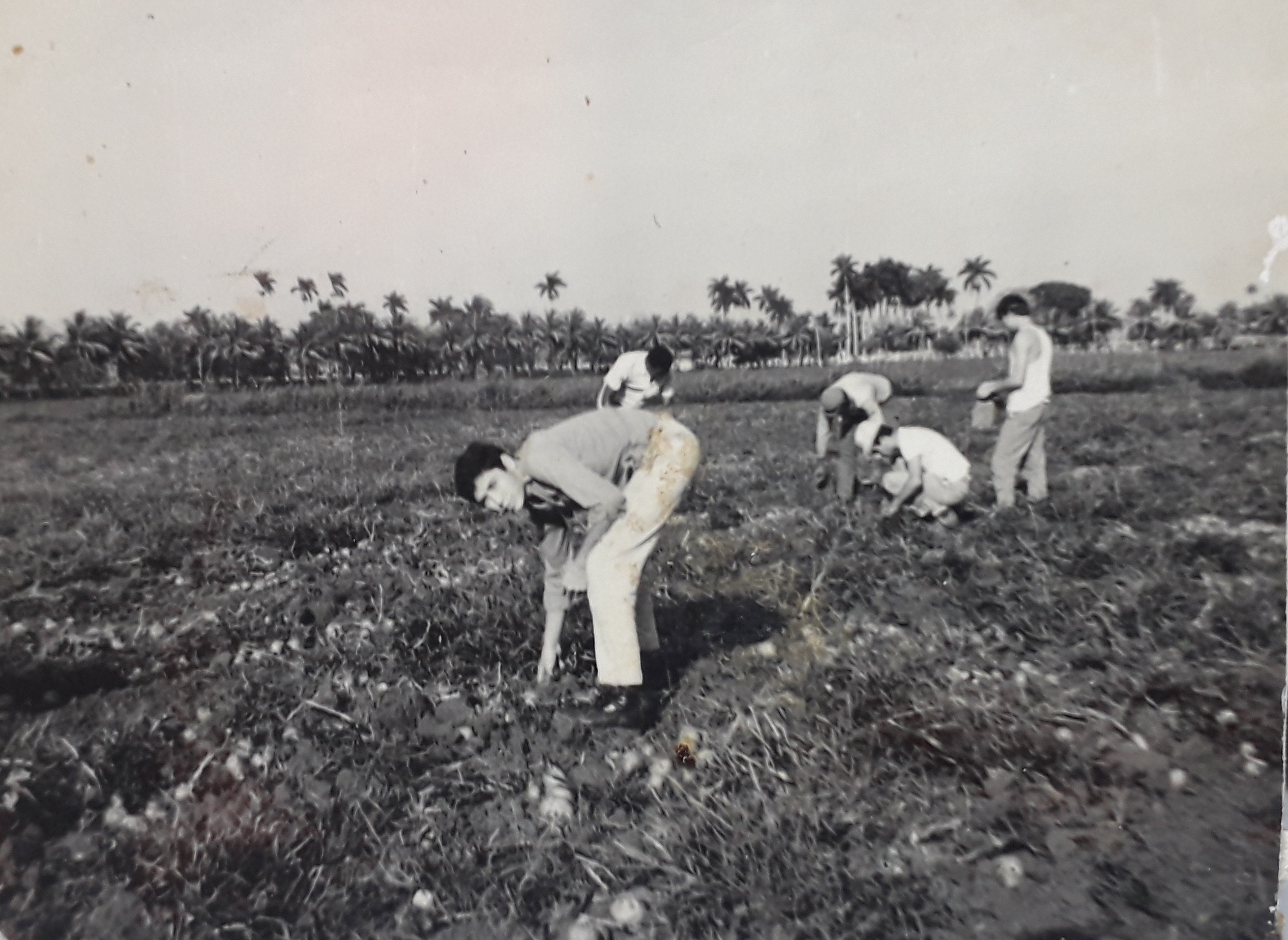 The study plan in Havana included support for productive work, in this case, potato harvesting.
The study plan in Havana included support for productive work, in this case, potato harvesting.
─How many things happened in the capital?
─Many. We had to go to all the stations and we even took supporting roles in television shows dressed as soldiers. Everything was done live, there were no resources to record. Some specialized as announcers, others as cameramen. Camagüey needed audio operators. I was a monitor in my specialty, I did my shift at Radio Marianao, they even wanted me to stay, but the family called me.
Upon returning to Camagüey, Francisco Rivero directed Radio Cadena Agramonte. He sent him to Amancio with other companions to found Radio Maboa. The inauguration took place on April 5, 1970. Silverio keeps a photograph of that moment, in which the intellectuals and revolutionary leaders Haydée Santamaría and Armando Hart are present.
“We were immersed in the '70 harvest; I was the operator of the Hart meetings. Every day I went with the Chinese team to record or broadcast directly what he said. At Radio Maboa I had my six-hour shift at night, but in the morning I did real volunteer work, in the cane fields. Sure, there was youth; I am already 69 years old,” he argues.
─When did you return to Cadena Agramonte?
─In 1976, because my thing was to come here. That's where my story as a sound producer begins. Cadena Agramonte had technological problems, until the donation of equipment through CAME. I had my fixed programs, for example, Miscelánea since 1977, which took on a tremendous boom because I included a system to support the announcer with the musical intro and when he finished, the lyrics of the song entered. I measured all the tapes. So working with tape was being a real artist.
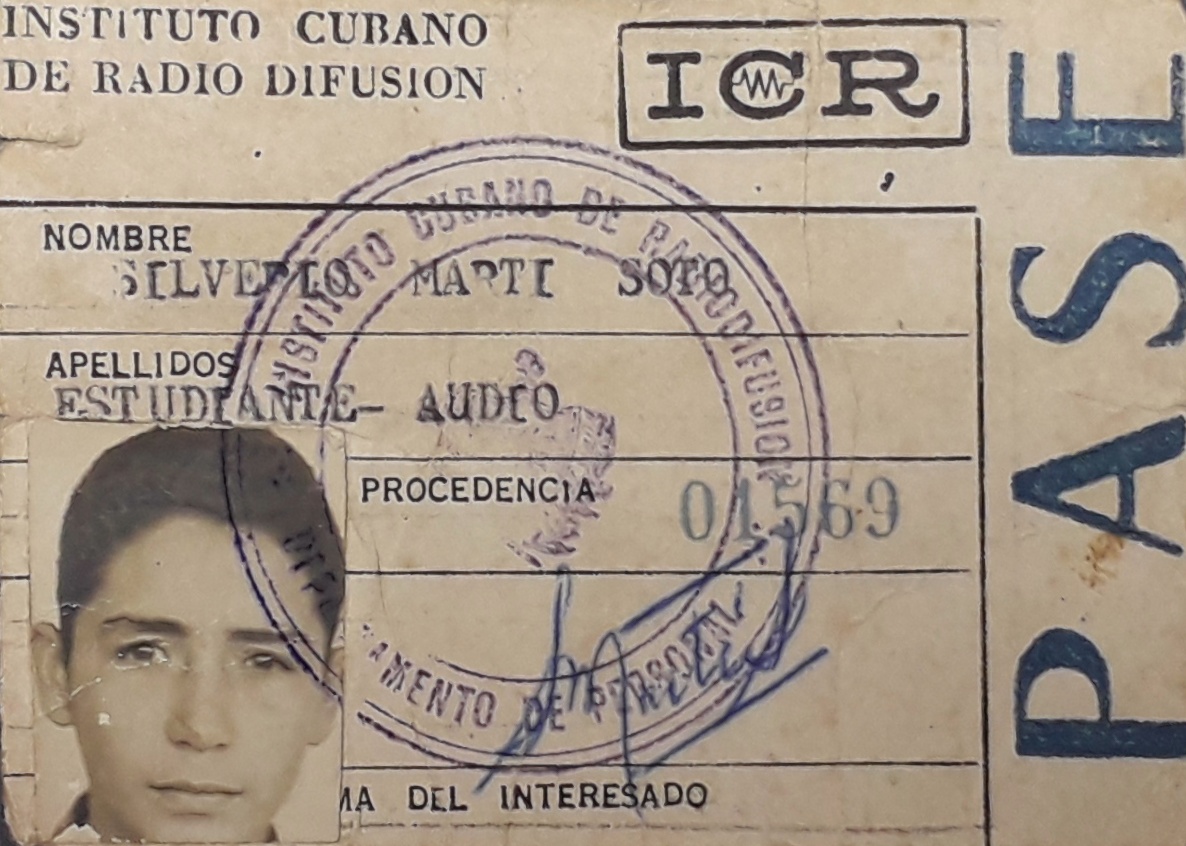 Audio student card, as it was called at that time.─Having enthusiasm for something is not enough, because specific talent is required. What shouldn't a sound artist lack?
Audio student card, as it was called at that time.─Having enthusiasm for something is not enough, because specific talent is required. What shouldn't a sound artist lack?
─A lot of effort, theoretical knowledge of broadcasting, of consoles, and above all, of our sound heritage, because radio is 80 percent music. You have to know about the formation of groups, authors, rhythms and genres. Of course, operating is important, keeping modulation in mind, maintaining the natural voice of the speaker, knowing how to equalize the music, giving it presence in the different frequencies: high, low, mid-high and mid-low.
Under the pretext of the interview, he has returned to his booth to talk, because his environment and the basis of his expertise are there. Since the 1980s he has been a member of the artistic council of the provincial radio system and of the national evaluation commission. He recently examined professionals from Villa Clara, Sancti Spíritus, Ciego de Ávila and Camagüey.
“I came to Cadena Agramonte as an audio operator, but in the year '80 the national broadcasting oriented the realization of a thesis according to your specialty. I did it on a microphone, I got 100 points and I was in the first level. Each microphone has its technical specification. They are not all directional, there are some that are only used for audio cabin. The station's Shures ones are good, but they're the only ones they have,” he explains.
─Sometimes the lack of technology leads to conformism and affects the result. If we ask you for a rating of the sound that circulates in general, what would you give?
─Terrible. On television, the sound of the bullets is noticeable out of plane. You hear distortion on the National Newscast, it's sad to say. Radio and television have lost. There are always mistakes, although the noise problem does not depend on a sound producer or a transmission, but on the telephone line or the Radio Cuba transmitter. There are inconveniences along the way, distortions, unforeseen signals.
Unwanted difficulties, for whatever reason, take Silverio back to an earlier time, when they had transportation to travel around the province for systematic evaluations, or of the transmissions made from the schools to the field in Sola.
“The sound of Camagüey has always been in the heart of the town. Cadena Agramonte planted roots. People were confident in their voices. In addition, the station had the best programming in Cuba, really varied, with all genres, musicals, news, magazines... Now they are musical blocks. We are copying Radio Rebelde, with its four-hour programs”, he points out.
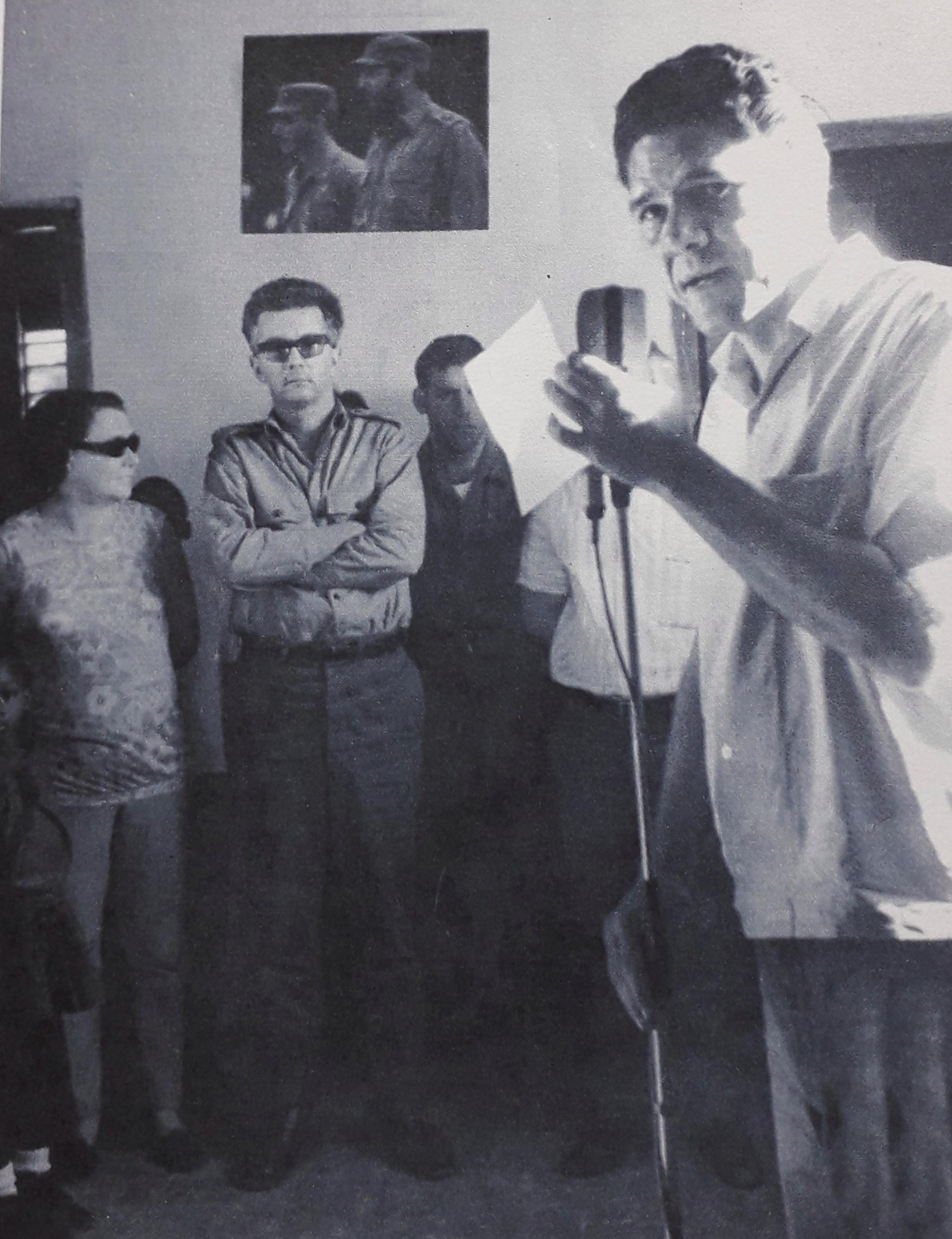 Haydée Santamaría and Armando Hart at the opening of Radio Maboa, in Amancio, a territory that belonged to the former province of Camagüey.
Haydée Santamaría and Armando Hart at the opening of Radio Maboa, in Amancio, a territory that belonged to the former province of Camagüey.
─It is said that institutions resemble their directors, do you confirm this?
─I really enjoyed Cadena Agramonte when Josefa Bracero was there. She came straight to the studios, to see the problems and solve them. She walked with a walkie-talkie and as soon as something happened she communicated with the master. With her you had to work excellently. She was very demanding, she love the radio station. Once I had my shift from 7:00 p.m. to 1:00 a.m. She gave me a program for the festival. It was 8:00 a.m. and we were still in the 15 minutes dedicated to the Bolshoi Theatre. When I got home, Lizneydi's mom didn't believe me.
─Who else do you remember with affection and respect?
─Francisco Rivero was highly respected, he listened to the opinions of the workers. There was a cast of announcers, both in the drama and in the booths: Carlos Mario Crespo, Rafael López Álvarez, Homero de Dios, Nino Moncada, Servando Yánez, identified their spaces. Among the directors, Enzo Pérez Felipe, a good recorder of novels, a star in music knowledge, a fan of the Aragón Orchestra; and Francisco Canela, a radio legend.
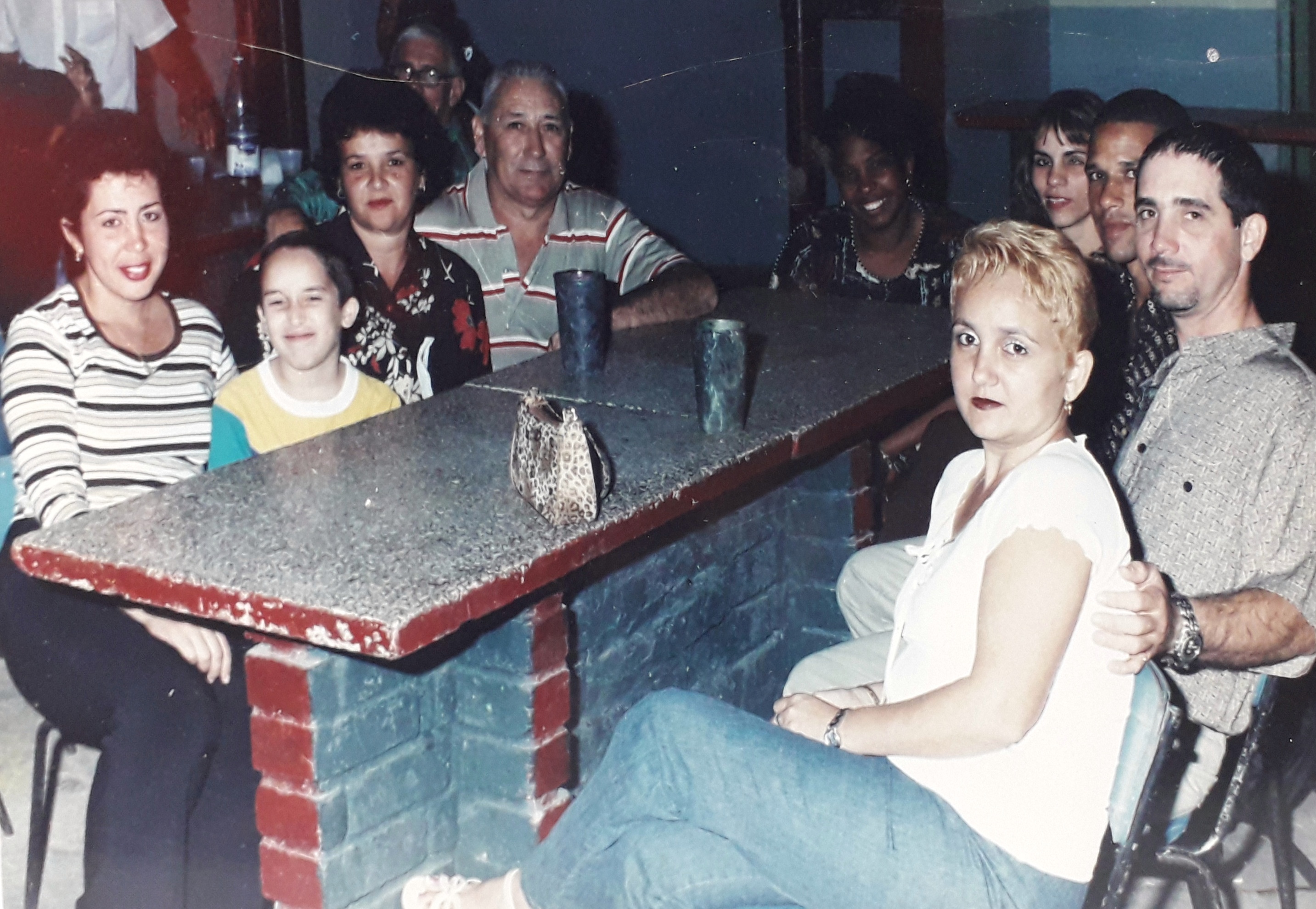 Moment of solace for her daughter Lizneydi and colleagues from Cadena Agramonte with her family.
Moment of solace for her daughter Lizneydi and colleagues from Cadena Agramonte with her family.
─Is any sound that passes through the radio filter a heritage?
─No, not just any sound. The voices of the announcers, the interviews with people who dedicated their lives to the medium, the music and the spots made for the station are heritage; in addition to the speeches of the leaders of the Revolution that have been preserved.
Silverio speaks proudly of his daughter, Lizneydi Martí Cordero, an audiovisual producer. Then he looks for his trophies in his backpack: the Radio Microphone received in the '80s, the Artist of Merit Distinction and the one granted by Cadena Agramonte for the 60th anniversary.
The trophies of a sound professional.
“Even as a retiree they keep calling me for concentrations. I worked on the transmissions of the First of May, from the Provincial Government. Cadena Agramonte can be heard quite a bit despite the lack of radio receivers. Today the youth is for the cell phone and other things, because technology has been advancing. The medium does have the scoop, try to inform you first. I no longer hear it. I watch more TV, I follow Russia Today and I use my cell phone.
─And you don't search for the station by real audio on the internet?
─No, I don't have internet for that. The signal arrives badly where I live, in La Esperanza district. I also notice difficulties in journalistic genres. An interviewee does not have music, nor does a comment from a speaker. Radio resources are not used, or are mistreated.
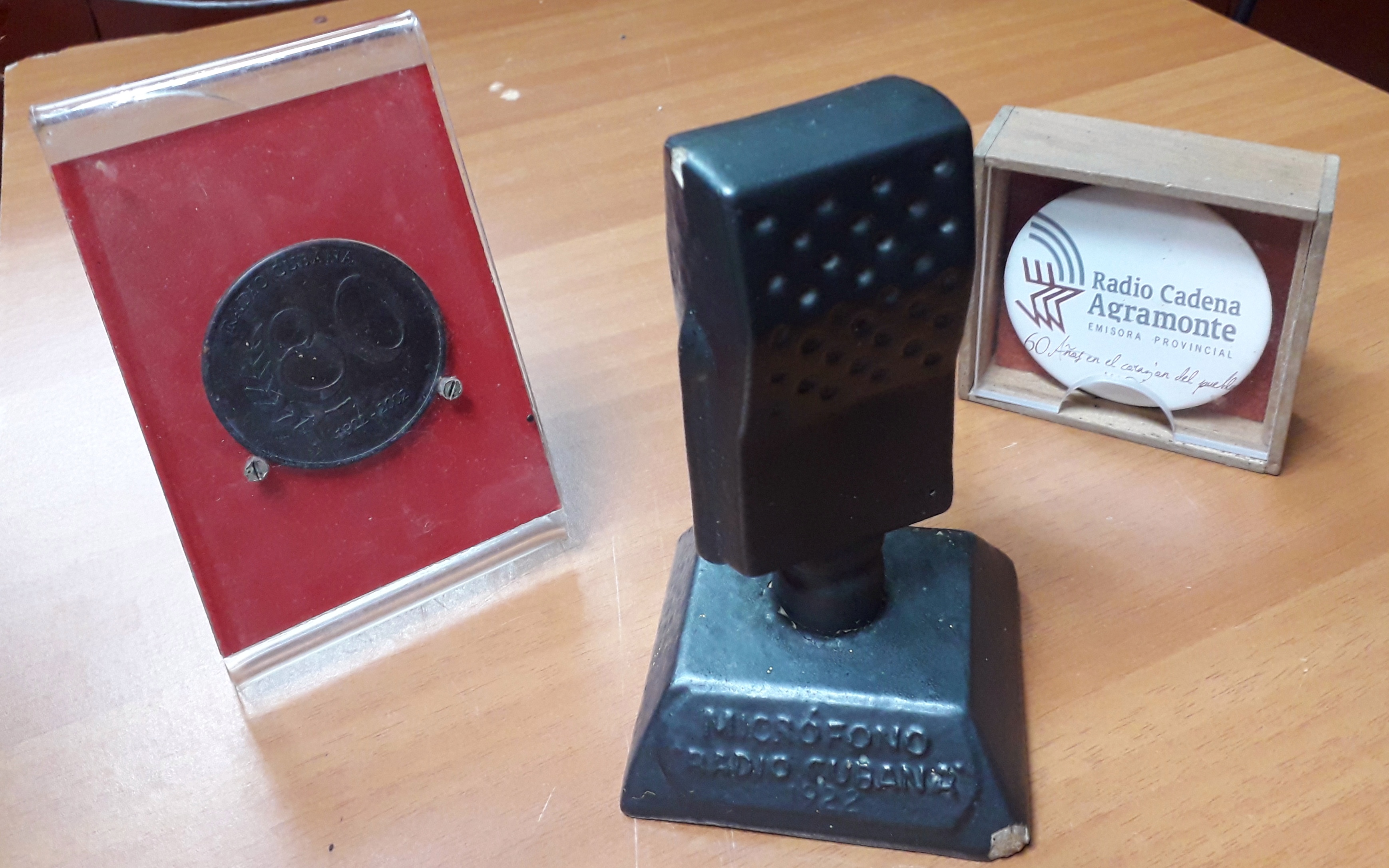
─To speak with your codes, if I ask you to define yourself, what frequency do you place yourself on?
─My frequency is high. I have a program director license but I never did it. I specialized in propaganda, something difficult because you have to know what you support each message with. The specialty of the sound maker is very nice. Anyone who has the opportunity to pass a course I recommend to do so. Here the radio management is going to support him because they know well that together with the announcers we are the heart of the station.
Translated by Linet Acuña Quilez



